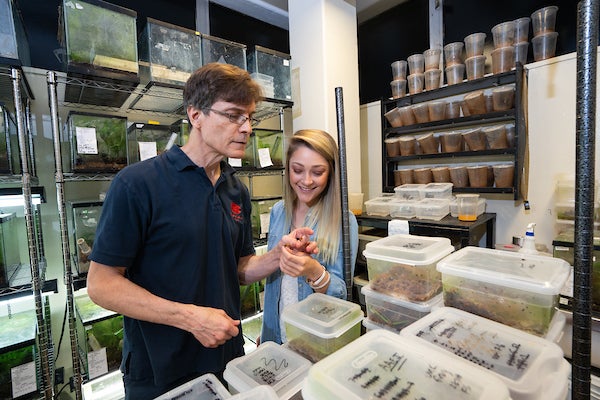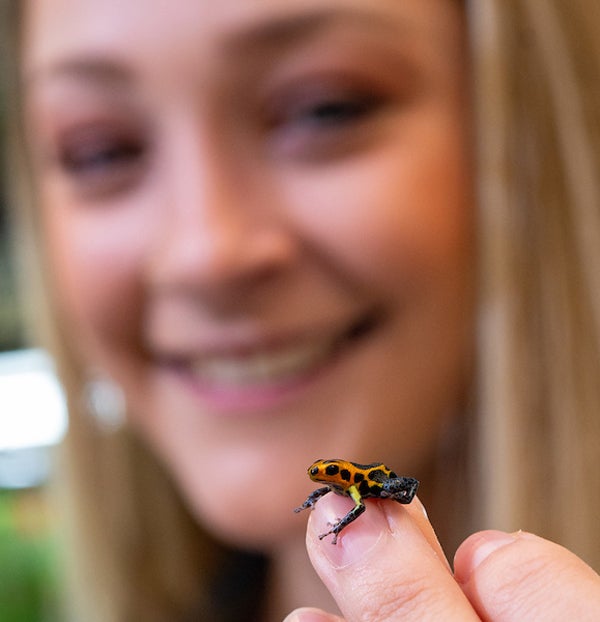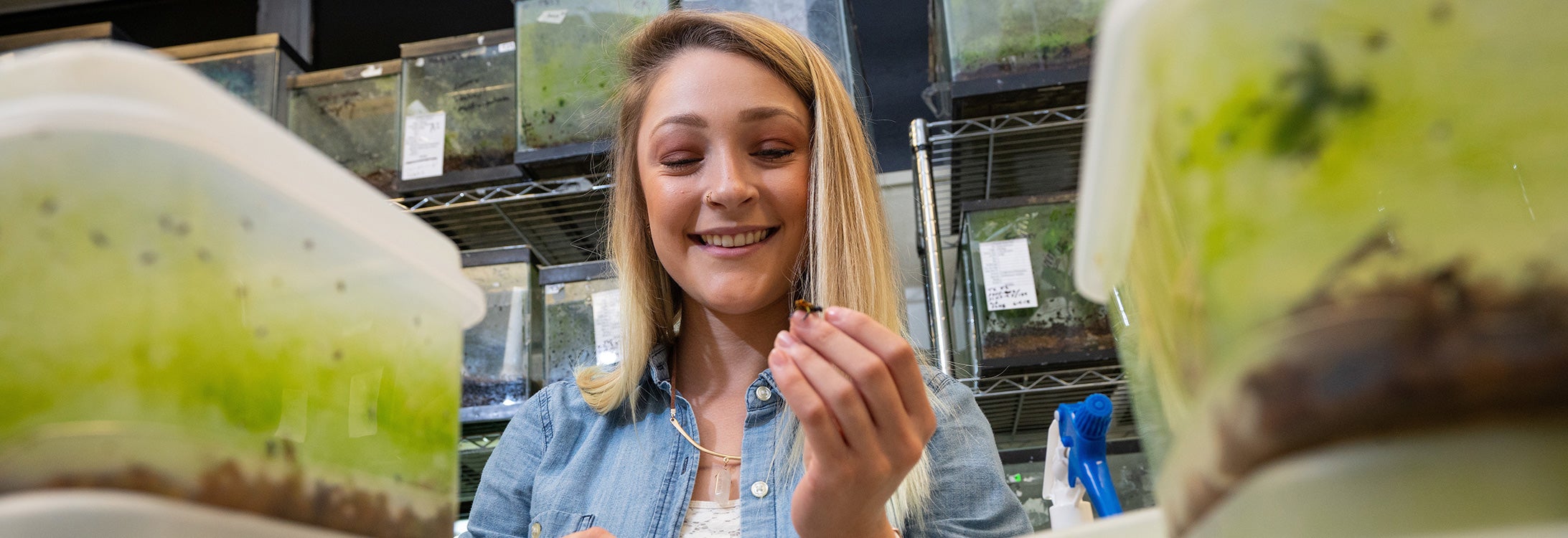A RIBBETING EXPERIENCE
Mikayla Johnson studies Peruvian frogs in biology department

Johnson and Dr. Summers examine each frog.
Studying evolution in Peruvian frogs may not interest some, but Mikayla Johnson considers herself lucky.
This summer, she was an undergraduate student researcher in the lab of Dr. Kyle Summers, East Carolina University biology professor. Through a project supported by the National Science Foundation Research Experience for Undergraduates, Johnson took part in an ongoing study of evolution, husbandry and Müllerian mimicry in different species of Peruvian frogs.
“It’s interesting, it’s not anything that I thought I would be doing,” Johnson said. She will be a senior this fall and is double majoring in biology and chemistry.
ECU is one of three universities in the country taking part in the study, which has been underway for seven years. The other two are the University of California at Berkley and the University of New Hampshire.
Summers was the first to demonstrate Müllerian mimicry in frogs and to use modern comparative methods to demonstrate an evolutionary correlation between toxicity and bright coloration in any animal.
He was awarded the Lifetime Research and Creative Activity Award by the university in 2017 because of this research project with the frogs.
“Kyle is respected across Central and South America and across Europe. His work is frequently reported on in popular media including National Geographic, the New York Times and Scientific American,” said Michael Van Scott, a professor in the department of physiology who at that time was serving as interim vice chancellor for research, economic development and engagement.

Johnson holds up one of the many frogs she monitors for her research.
Johnson spends the majority of her time testing samples of frog tissue in a molecular lab, but other daily tasks include feeding each frog 20 flies, misting their tanks and checking on tadpoles.
“You have to take care of them like your household pet, except there are 200 of them,” she said.
With that many frogs it could seem overwhelming, but Johnson and the other researchers have made each of them a home.
The frogs are put in glass tanks that are designed to replicate the rainforest in Peru. Each tank has one male and one female that will be monogamous for the rest of their lives.
The difference in these frogs versus many others is that over time they begin to mimic other species through coloration as a survival-of-the-fittest technique.
The goal of the entire study is to follow the evolution of the genes that allow these frogs to mimic other frogs and how it’s controlled, as well as to see if that could possibly be beneficial to the human race.
“Some of them even have their own personalities,” Johnson said.
She has even named some of the frogs after getting to know them so well this summer.
Johnson has plans to continue working with the frogs even after the internship ends.
She is on track to receive her bachelor’s degree from ECU in May. She also has plans to get her master’s degree in biochemistry, but is unsure what career path she will choose after she finishes school.
